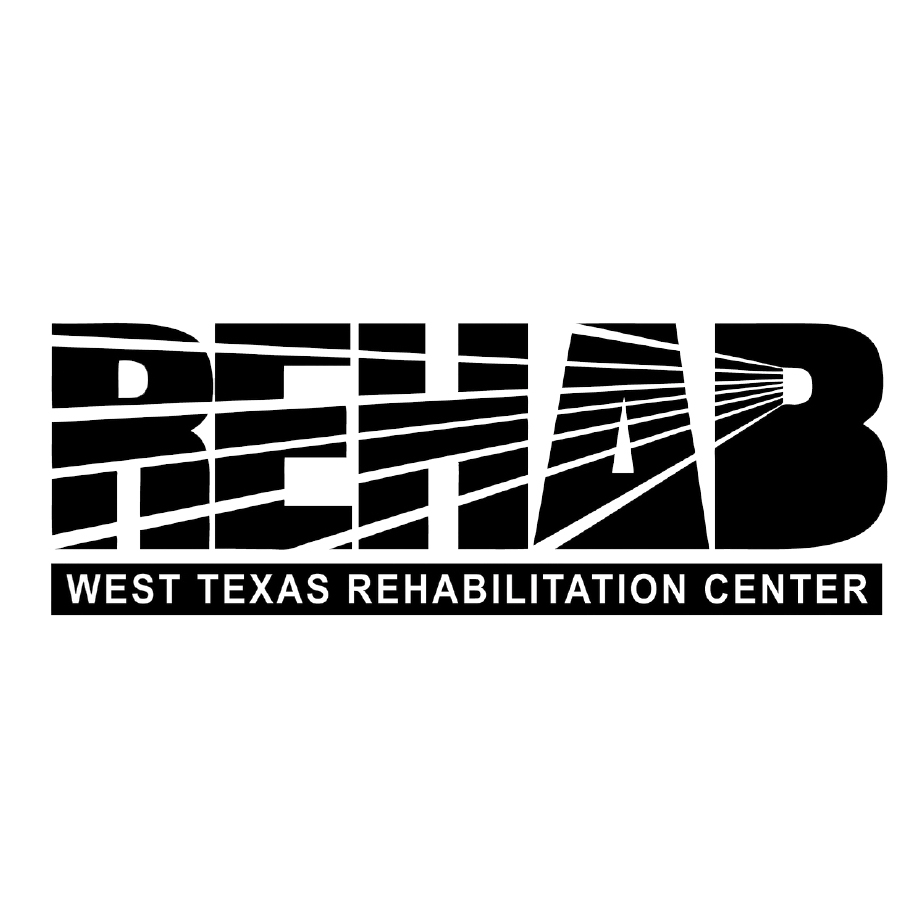By Laura Gutschke
The Blair Family
Daisy and Joe Blair’s life has changed in ways little and big since adopting three foster children. They also have three older biological children.
“It’s not easy, but it’s always good,” Blair said.
Joe, originally from Robert Lee, is a self-employed horse trainer. He met Daisy, a Menard native, while students at McMurry University. Today they are parents of Stran, 13; Daylee, 11; Cutter, 9; Emme Rae, 7; Hayden, 2; and Ira, 1.
“If you had told me three years ago that I would have six kids, I would have said you are crazy,” Blair said.
After the three younger children – nicknamed “The Littles” – joined the Blairs, the couple added a bedroom, game room and bigger laundry room to their house.
“I now drive a 12-passenger van, and I like it,” Blair said. The van has more cargo space and relieves some of the “don’t touch me” and other typical sibling battles. And, there is room for a friend or two to tag along.
“When you have six, what’s one more?” Blair said with a laugh.
The Blairs’ foster-to-adopt journey began when a friend who was fostering twins asked the couple to become certified to baby sit. During the training process, “we felt called to do this,” Blair said.
Opening their home to others was comfortable for the Blairs, who had hosted three young men from Ethiopia. They also had been on missionary trips to Mozambique.
The Blairs talked with their children, who “were on board from the start,” Blair said. In October 2012, they started with New Horizons the foster licensing process that included background checks, training, home visits and lots of paperwork. On Jan. 22, 2013, the day after they were licensed, they were asked to take in newborn Ira and her 10-month-old brother Hayden.
“In four hours, the caseworker was at my door with a 10-month-old who had only the clothes on his back and two diapers. During that time, friends and people from church rallied to gather things for us,” Blair said. They are members of Beltway Park Baptist Church.
That was also the day that Daisy’ mother had a brain aneurysm and was in ICU at the same hospital where Ira was born. The Blairs visited both in the hospital, and her mother eventually recovered.
“During the first six months, I could hardly go anywhere. People would come to the house to rock the baby or do laundry,” Blair said.
Six months after Ira and Hayden joined the family, a caseworker called asking if the Blairs would take in Ira and Hayden’s older half-sister, Emme Rae, then 5. Separating siblings was never an option for the Blairs.
By June 2014, the adoptions of the The Littles had been finalized.
The adjustments have been many, including laundry, mealtime, naps, doctors’ visits, behavioral issues, school schedules and sports activities. The Blairs also try to find individual time with each child. Joe periodically wakes up one child early for a breakfast out. Daisy may take one with her to the grocery store.
“The benefit too of having six is that they love on each other,” Blair said.
Blair often is asked if she loves the adopted children like her biological ones.
“My biological children, the second they were in my arms, I loved them. But my love for my husband was not instant the first time I saw him. Of course I love the Littles, but it was a growth process,” Blair said. “It’s not instant but God is quick to have that love multiply.”
She later added, “I’m blessed with three amazing children I would have never known. I get to see them doing fun things. I’m prideful when I see their first this or first that. I really don’t look at them any different.”
Blair credits family, friends and church members in helping make their new family dynamic work.
“At first we survived with six kids, and now we thrive,” Blair said. “We’ve trusted God. We’ve never looked back.”
The Tidmore Family
When Heather and Taylor Tidmore first met their daughter Sara in an Ethiopian orphanage in August 2013, the toddler never spoke during the five days they spent with her to start the adoption process.
Sara remained quiet when Heather and her sister returned to Ethiopia two months later to finalize the adoption and bring the then 18-month-old to Abilene.
“She didn’t say a word. She would cry, but she wouldn’t make a sound,” Heather said.
Fastforward to 2015, and Sara is a vivacious bundle of energy in the Tidmore family, which also includes biological children Anna, 10; Mason, 8; and Will, 6.
“Today she is nothing like the child we met in Ethiopia. She is full of joy, she’s loud and busy and talkative,” Heather said.
The transformation began at the Washington D.C. airport following an 18-hour flight.
“When we got off the plane, she was running around, making sounds, blowing me kisses, touching everything,” Heather said.
That change in personality was one of many surprises for the Tidmores after deciding to pursue an international adoption. Their adoption story begins with Bible study, prayer and Donald Miller’s book “A Million Miles in a Thousand Years,” which encourages people to live a challenging life story. Pam Cope’s book “Jantsen’s Gift,” which chronicles her and her husband’s work with vulnerable children in Ghana, Vietnam and Cambodia, brought into focus how international adoption was the way for the Tidmores to live a more meaningful story.
“God doesn’t want our story to be boring,” said Taylor, who is an otolaryngology (ear, nose and throat) physician.
The couple has been on missionary trips to Haiti, and he also has been to Ghana. They eventually decided to work with America World Adoption Agency. The adoption process included home visits with social workers and the fire department, traveling to the Homeland Security office in Lubbock to be fingerprinted, and gathering financial statements, medical records and other documents.
The Tidmores initially were told the process would take 12 to 18 months, but their experience was 38 months.
“I can’t help but think that God helped put her with us,” Heather said.
Looking back, the lengthy wait also helped in ways they did not initially expect.
“As long as it took us, we needed that time to fully prepare. Your heart ached so much that you are better prepared to deal with the challenges,” Heather said.
Those challenges include Sara’s high level of curiosity and fearlessness.
“She had never been exposed to anything. At the orphanage she was in a small room, and we don’t think she went outside much,” Heather said.
“She wanted to explore and touch everything,” Taylor added. “Even though she was in a small room, there were no boundaries. She didn’t know, ‘You can’t go there.’”
At public restaurants, she might try to grab a chip off another table. And, she probably had only sponge baths at the orphanage, so bath time was a struggle at first.
“It’s little things like that that were big challenges,” Heather said. “Now she loves bath time.”
Unexpected health problems arose, including some conditions that required care by a pediatric gastroenterologist and pediatric ophthalmologist.
About two months after Sara arrived in Abilene, Heather admits that the obstacles were overwhelming at times, compounded by the busy schedules of the three older children. They attend Thomas Elementary and are involved in cheerleading and sports.
“An adoption happens because something is broken,” Taylor said. “When you take some of that brokenness into your family, it’s going to be hard.”
Through prayer and support of family and friends at Southern Hills Church of Christ, the couple rallied, and many successful corners have been turned. Sara is a joyful, loving child who has bonded well with her parents and siblings.
“She’s incredibly smart. She looks at things and plays with things in ways my other children did not,” Heather said.
“She didn’t know English the first 18 months of her life, and her language has developed very quickly,” Taylor said.
With Sara, the Tidmore story is one that “gives God the glory,” Heather said.
The Campbell Family
Sarah and Kevin Campbell’s adoptions of their sons, Zach, 4, and Cole, 2, was so open that in each boy’s room hangs a photo of his birth mother.
“I believe that if a birth mother has intentionally selected Christian Homes (an Abilene agency), knows their philosophy and gone through the selection process of picking adoptive parents, then there’s some maturity and stability there. The worst-case scenario is no long in the back of my mind,” Kevin said. “I can imagine that one day Zach, when he is older, spending a weekend with his birth family.”
Adoption always was an option for Sarah because of childhood medical conditions that doctors said could make getting pregnant difficult. She and Kevin met while camp counselors at Abilene Christian University. Today he is ACU’s chief enrollment officer, and she is director of student ministry at Highland Church of Christ.
After unsuccessfully trying to become pregnant, they faced infertility treatments or adoption.
“We decided on domestic newborn adoption because we thought it would be quicker,” Kevin said.
One of the first steps was attending a two-day orientation at Christian Homes & Family Services that included a panel of adults adopted as children – one through a closed process not knowing the birth parents and two through open procedures. Their comments resonated with the Campbells.
“There are two foundational questions that the adopted adults had growing up. Who was my birth mother, and do I have siblings? After hearing that, I was open to open adoption because our boys would have those foundational questions answered,” Kevin said. “And, since we are connected to their birth mothers, we can ask them other questions that we don’t know about yet.”
Part of the application process includes putting together a portfolio for the birth mothers to review and answering an extensive list of questions that involved more than just gender and ethnicity of the adopted newborn.
“Some of it involved us having very difficult conversations. What kind of background of the birth parents are you willing to accept? What about drug use? History of mental illness?,” Kevin said. “We felt very uncomfortable, like we were playing God.”
The Campbells met Zach’s 16-year-old birth mother during her pregnancy and initially agreed to communication via emails, pictures and texts. They were in regular contact during the pregnancy and first saw Zach when he was 2 days old.
“The day we met Zach, we told them (the birth parents) that they will be a part of his life and he will know your story,” Sarah said.
What initially started out as a text or email every day grew into a few face-to-face visits between Zach and his birth mother and grandmother, who live in the Dallas area.
“We went to Dallas to see Kevin’s family when Zach was 3 months old, and she saw him during that trip,” Sarah said. “Our family in those two days grew exponentially.”
Since then there have been visits at Christmas and birthdays.
Cole’s birth mother was 31 at the time of his delivery and allowed the Campbells to see him two hours after his birth. Other communications and visits have followed.
“Cole’s birth mom saw Cole at the baby’s blessing with all the family,” Heather said. “She said she always wanted a family like this, and Kevin’s mom, without skipping a beat, said, ‘Now you have one.’”
The Campbells saw how open adoption helped their sons and the birth families. But, the openness also benefited the Campbells in ways they did not expect.
“I’ve had new understandings of God’s grace through the birth mother’s sacrifices,” Sarah said. “There are not enough words to express our thanks.”
And, just when the Campbells had started to discuss possibly adopting a third child, Sarah became pregnant. Their third son is due in April. The news has been well received by the birth mothers.
“Cole’s birth mother said, ’You just look like a mom of boys,’” Sarah said.
A Home for Every Child
At its core, adoption is about giving every child a home.
The three main adoption options in America are domestic newborn, foster-to-adopt and international, the latter of which has been on the decline in recent years, according to statistics from the U.S. Department of State website for Intercountry Adoption. Part of the reason is increased regulations and restrictions from the other countries.
An important step in considering adoption is self-evaluation about the motives, both as an individual and a couple, suggested Heidi Morris, Ph.D., a faculty member at Abilene Christian University who teaches family and child services undergraduate classes.
“Both people need to be in a similar place on this,” Morris said. “If one spouse is hesitant or reluctant but acquiesces, that’s going to set the stage for some tension later.”
Domestic Newborn Adoptions
Prospective parents usually have three initial questions about domestic newborn adoptions, said Sherri Statler, president/CEO of Christian Homes & Family Services. The Abilene agency provides domestic newborn and foster-to-adopt placements.
“How long will it take? How much does it cost? And, how open does it have to be?” she said.
A domestic newborn adoption from start to finish takes on average 18 to 24 months, but some families have gone as long as three years, Statler said. The cost is $18,000 to $24,000.
“A large part of that is due to the free maternity care we provide the birth mothers. We might care for two or three birth mothers for every one that decides to place their child for adoption,” Statler said.
The openness of an adoption is negotiated between the birth parents and adoptive parents and is a way for both parties to develop mutual appreciation, love and respect for each other’s roles in adoption, Statler said.
Christian Homes requires adopting couples to attend a two-day workshop to learn more about adoption and gain a better understanding of the open concept. The program includes talks by former birth mothers, adoptive parents and adults who were adopted as children.
“Birth mothers make an adoption decision out of love and a desire to do what is best for the baby. We tell parents that they have nothing to fear from birth mothers,” Statler said.
Foster-to-Adopt
For a foster-to-adopt placement, the state pays the foster parents a daily stipend while the child is in the home, and the adoption fees are paid by the state as well.
The timeframe for permanent placement depends on the state, whose first goal is to reunite the child with the birth family, Statler said.
If there are other children in the adopting family, parents need to weigh the impact of another addition. An honest conversation with current children also is helpful.
“It’s not necessarily a meeting to put it to a vote, but let the children have a voice to express concerns, especially older children. They will have questions, like, ‘Who sleeps where?’ and ‘Will you still coach my baseball team?’” Morris said.
A common misconception that couples have about foster-to-adopt is that they have to be perfect parents. Another is that people feel a baby has a clean slate, while a foster child has life experiences that can be challenging.
Foster adoption issues can include discipline, mental, emotional and/or physical health and helping biological children adjust to the new addition. To address those concerns, Christian Homes’ caseworkers provide foster parents training and support throughout the adoptive process.
Statler said foster-to-adopt may not be for every one, but another important option is becoming certified to baby-sit foster children, which is also called respite care, so that foster parents can have date night or a weekend to attend a school reunion. State regulations require that only certified individuals provide respite care.
“As a society, we need to commit to every child having a home and a family to call their own,” Statler said.

































Leave a Reply